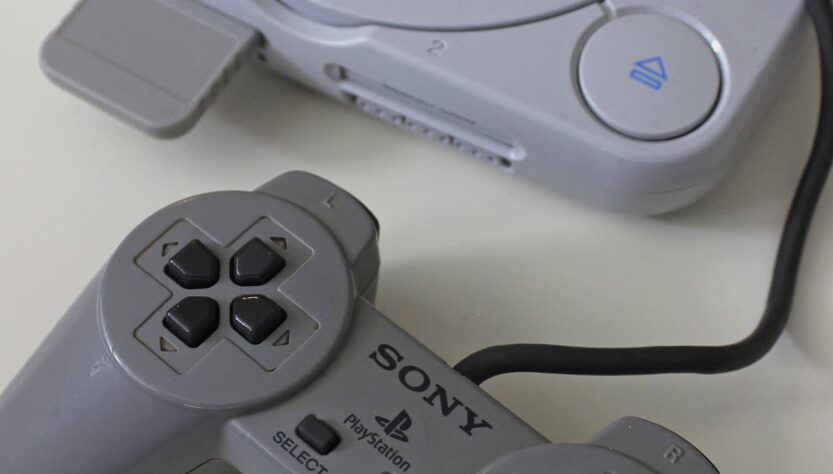Sooner or later the life cycle of any electronic device on the exhaustion of technological potential comes to an end. And game consoles are no exception. The most successful ones manage not only to cross over with the successor console, but also to retire with honors. Leaving gamers a rich legacy, these systems are forever included in the hall of fame retrogaming, where they gain lifelong prestige and iconic status.
Mastering advanced technology, coupled with aggressive marketing and a sense of timing, exalted some manufacturers and crushed others. Thus the alternating leadership of Sega and Nintendo in the fourth generation ceased to be stable and predictable by the early 90s. From now on, Philips (with CD-I), Atari (with Jaguar), and the newly founded The 3DO company (with 3DO Interactive multiplayer) wanted to be the “king of the mountain”. But time has put everything in its place: and the price of fleeting (sometimes even imaginary) success, in the end, was the logical oblivion…
One way or another, outdated consoles have settled not only in stockyards and garages, but also on the shelves of collectors and gamers. And the more encouraging for the higher console justice that some systems managed to continue their posthumous existence, though in a slightly different role. Some were allowed to redeem their lifetime failure, and some, on the contrary, to strengthen the previously gained positions.
But first things first.
The first to drop out of the generation race was the semi-autonomous Sega Genesis 32X. The 32-bit addon on cartridges was a gentle preparation for Sega Genesis owners for the nascent era of 3D gaming, polygonal graphics and a whole new gaming experience. But the $159 price tag and numerous announcements of the upcoming Sega Saturn crippled the future of the device right at the start of sales (in November 1994). Outside game developers didn’t see the potential in the 32X that Tom Kalinske (president of Sega of America) constantly exhorted about, so they preferred to work with the familiar Genesis or concentrate on its full-fledged successor, the Sega Saturn.
So the misalignment between the Japanese center and the American division put an end to the 32X. Neither the Doom port, nor the best Mortal Kombat II adaptation, nor Virtua Fighter, nor Knuckles’ Chaotix saved the console. Production of the addon was hastily curtailed within six months of launch. But unlike the Sega CD, the 32X iron, having passed “console purgatory”, found new life in 1996, this time in the Picture magic graphics tablet. Which, you must agree, quite decent for such a controversial basic device.
In the same year, the Jaguar died, which turned out to be a big bluff of Atari. Jaguar wasn’t helped to stay afloat by the best port of Doom, Alien vs predator, Sega’s cash infusion after protracted litigation, the Jag-CD, or the promised virtual reality. Nothing! The players’ trust was forever undermined and could not be rehabilitated. What’s interesting, the new incarnation threw the Atari Jaguar into the dentist’s office, where they made a medical whale out of it, transforming the original to absolute perfection. In fact, the world got exactly the Jaguar it deserved.
Along with the Atari Jaguar, the river of oblivion swallowed up the first console from The 3DO company. Mainly, the prohibitive price and weak support of third-party developers predetermined the inglorious end of the first full-fledged console of the 5th generation. The head of the company Trip Hawkins, realizing his blunders and the real strength of the competition, in 1994, concerned about the creation of the second, 64-bit generation machines 3DO. The 3DO II, hereafter simply M2, was thought of as an add-on extension to the base machine, but in the design stage it took on the outlines of a full-fledged console.
After a year of hype and active bluffing, the M2 specifications were successfully sold to Matsushita. Unfortunately, the Japanese giant did not analyze the correlation between the successful launch of the PlayStation and Sony’s purchase of Psygnosis Studio. And yet, having owned, say, Studio 3DO and even Electronic Arts, it would have been easy to launch M2. After struggling until mid-1997, Matsushita scrapped the project, dropping out of the console wars forever. The result of the policy of uncertainty was the use of M2 hardware in automated teller machines, coffee machines, and similar, hopelessly far from game industry devices. Infamously locked iron used for its intended purpose only in arcade cabinets Polystars from Konami, but because of the problems with the media game data cabinets have not won popularity.
In contrast to the outsiders of the 5th generation leader Sony PlayStation felt confident not only in the gaming role, but also in the field of music. Indeed, the early versions of the console, for example, SCPH-1002 with a chip akm4309avm, nicknamed “audiophile”, successfully competed with hi-end CD-players in the category up to $ 1000. Sony would later do the same with the PlayStation 2, whose DVD player would become the most budget-friendly in history, and the PlayStation 3 with its Blue-ray ROM. But these examples are more of a lifetime dual purpose than a non-gaming incarnation.

